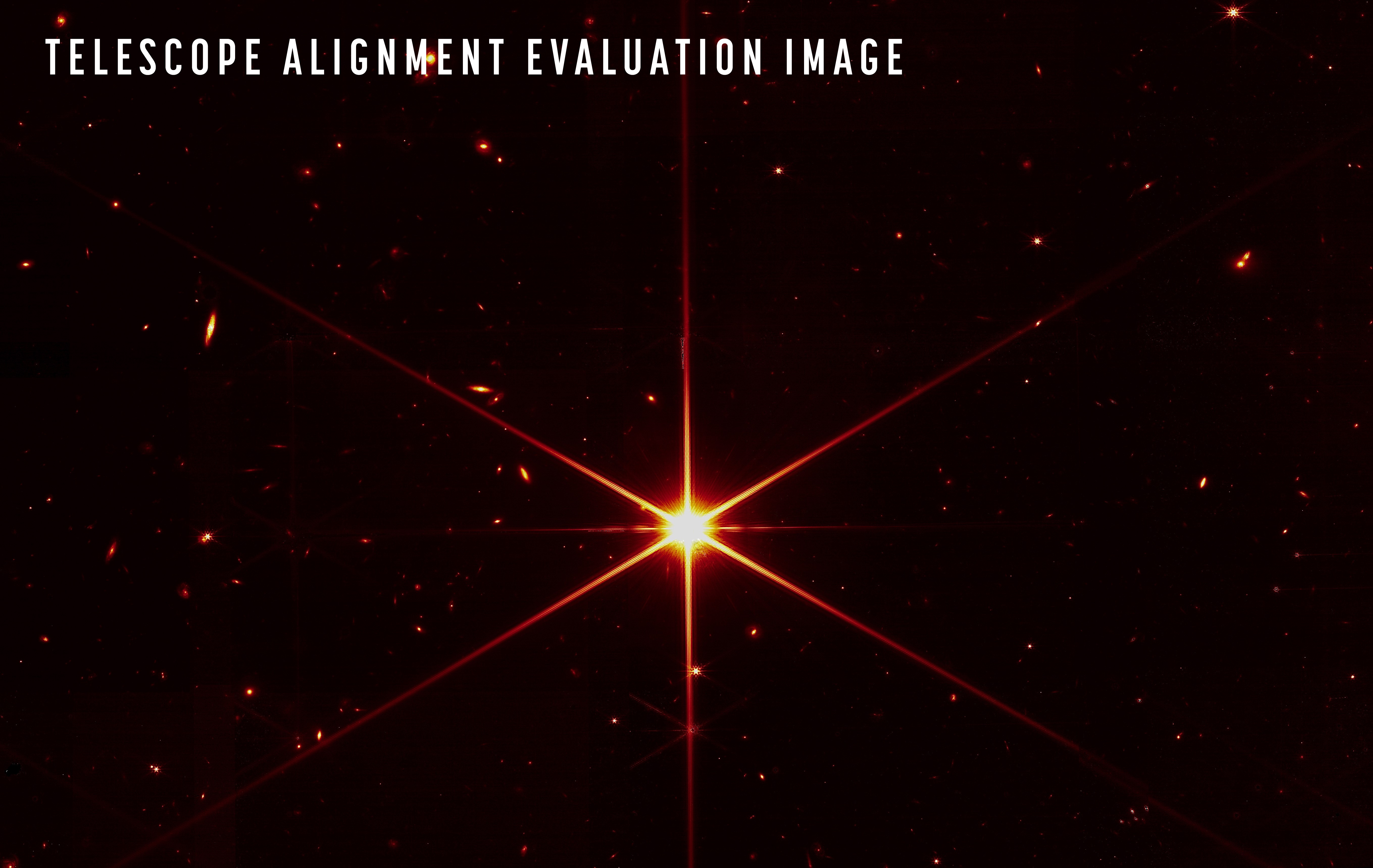New James Webb Space Telescope photo showcases single star in key mission milestone
The next great observatory is sharpening its vision and well on the way to cracking mysteries of the universe.
The James Webb Space Telescope launched in December, arrived at its station nearly 1 million miles (1.5 million kilometers) away from Earth in January, and has been hard at work preparing to conduct science the $10 billion mission was designed for. The spacecraft notched another key milestone in its preparations when it completed "fine phasing" on March 11, the agency announced on Wednesday (March 16).
The telescope has also met every optical parameter engineers needed and is cleanly delivering light to its instruments. The achievement leaves NASA fully confident that the observatory will meet its science objectives.
"We have fully aligned and focused the telescope on a star, and the performance is beating specifications. We are excited about what this means for science," Ritva Keski-Kuha, deputy optical telescope element manager for Webb at NASA's Goddard Space Flight Center in Maryland, said in a NASA statement. "We now know we have built the right telescope."
Related: NASA's James Webb Space Telescope mission: Live updates
The new image centers on a star called 2MASS J17554042+6551277, according to the statement. That represents a new target for the observatory: Previous steps of the commissioning process centered on HD 84406, a star in the constellation Ursa Major that is located about 241 light-years from Earth.
Also visible in the background are other stars and galaxies that the agency did not identify.
Breaking space news, the latest updates on rocket launches, skywatching events and more!
JWST's observing power comes in part from the telescope's massive mirror, which stretches 21 feet across (6.5 meters). But a mirror of that size can't be launched as-is, so the observatory's designers split the golden surface into 18 individually adjustable hexagonal segments.
For weeks, engineers on the mission have been fine-tuning the alignment of those segments to bring the universe into focus for the massive observatory. That process isn't yet complete, NASA emphasized, but the hardest, most anxiety-inducing steps are now behind the team.
"More than 20 years ago, the Webb team set out to build the most powerful telescope that anyone has ever put in space and came up with an audacious optical design to meet demanding science goals," Thomas Zurbuchen, associate administrator for NASA's Science Mission Directorate, said in the statement. "Today we can say that design is going to deliver."
The agency also released a "selfie" image using a lens tailored to photograph the primary mirror to assist engineers during alignment.
Once mirror alignment is complete — perhaps by early May, NASA said — the team's other major preparatory step is to calibrate the instruments aboard the observatory. That work is expected to be complete by this summer, when JWST will be able to begin its science observations.
The observatory's science agenda includes tackling topics like understanding the earliest days of the universe, assessing the habitability of exoplanets and identifying the impact that mysterious dark matter has on the cosmos.
Email Meghan Bartels at mbartels@space.com or follow her on Twitter @meghanbartels. Follow us on Twitter @Spacedotcom and on Facebook.

Meghan is a senior writer at Space.com and has more than five years' experience as a science journalist based in New York City. She joined Space.com in July 2018, with previous writing published in outlets including Newsweek and Audubon. Meghan earned an MA in science journalism from New York University and a BA in classics from Georgetown University, and in her free time she enjoys reading and visiting museums. Follow her on Twitter at @meghanbartels.


